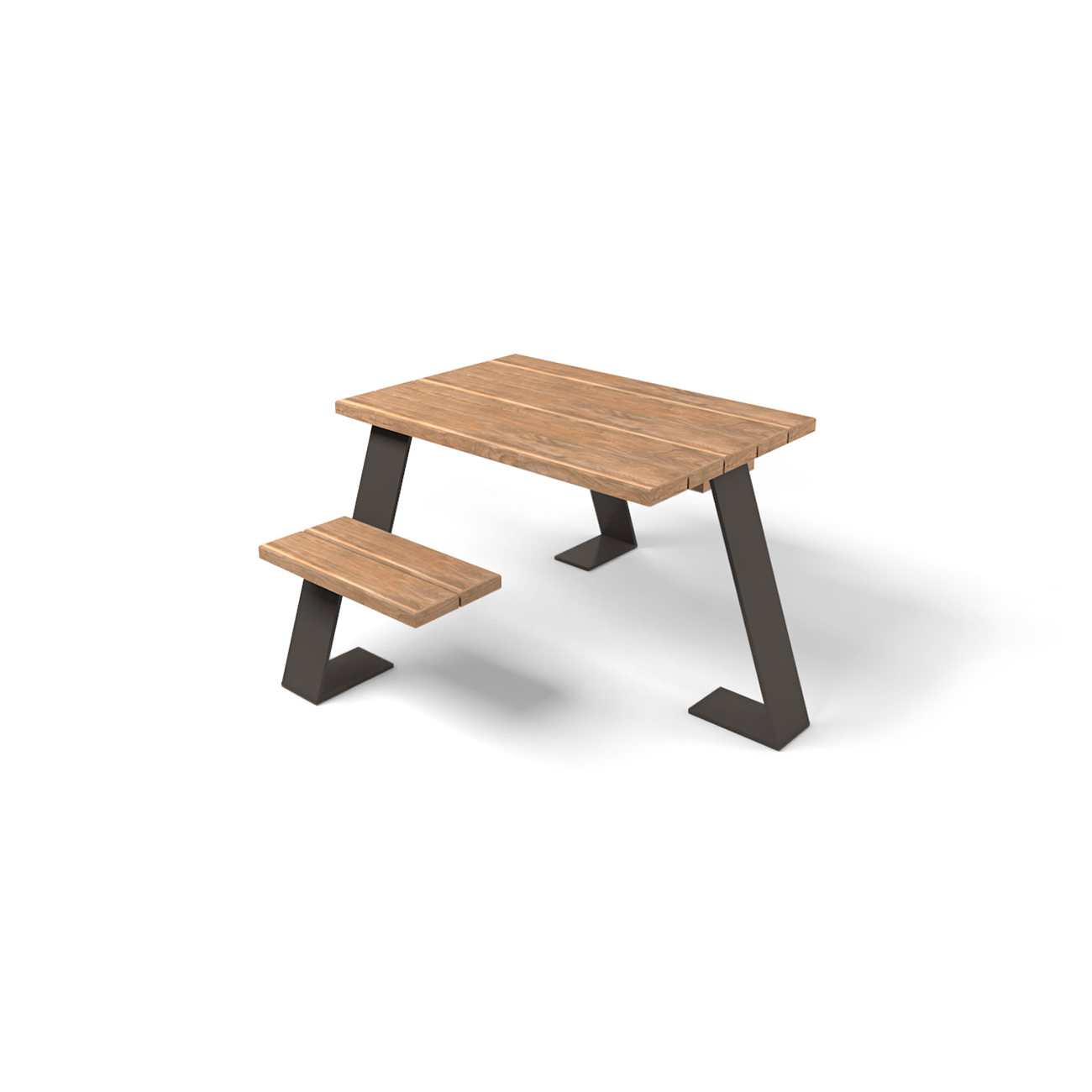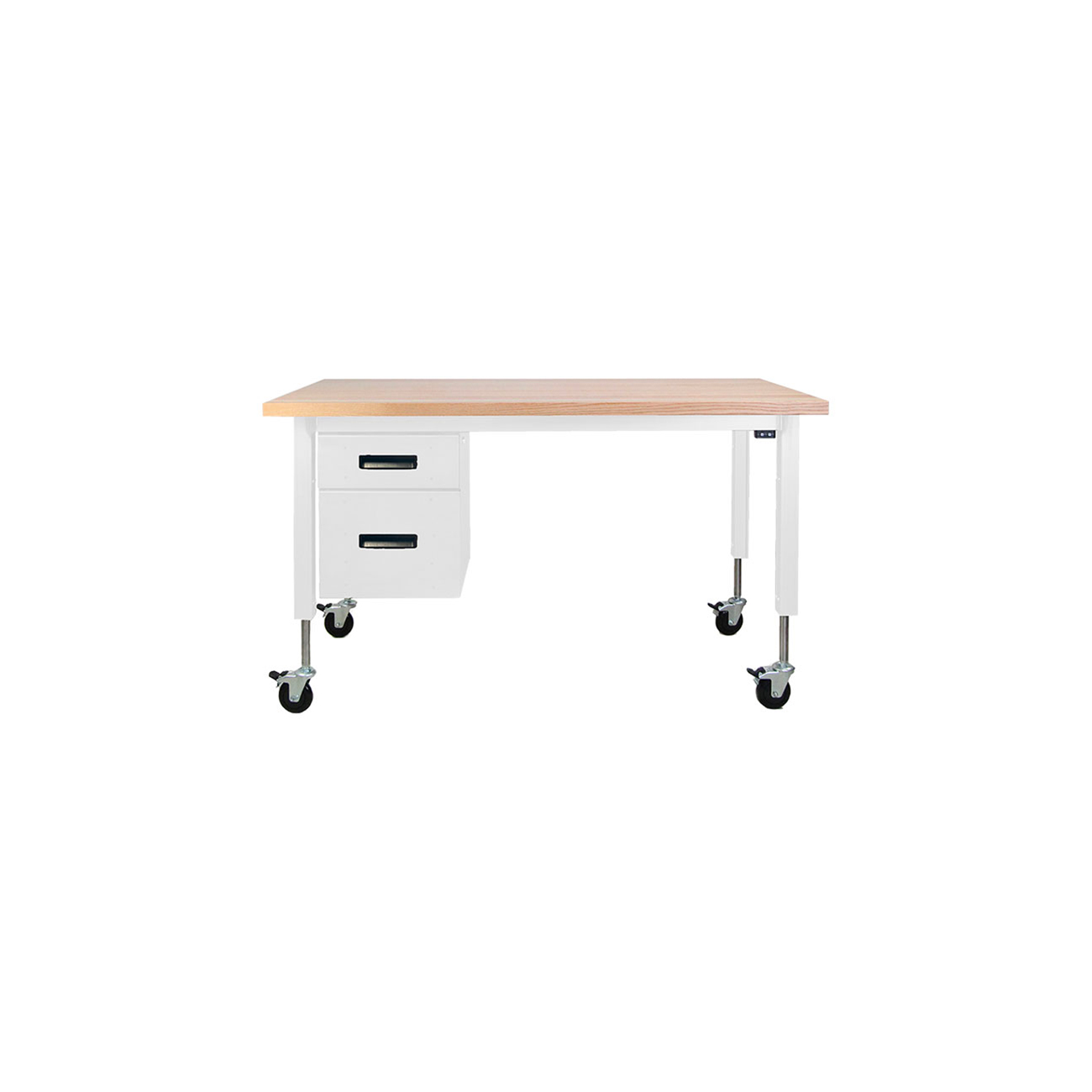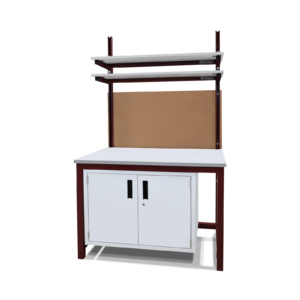We Live in an Ableist World. Can We Do Better?
Are you an ableist?
Perhaps that term is unfamiliar to you, but it’s commonly used among the differently-abled community to describe those who don’t stop and think about how the world we live in is designed for able people – to the exclusion of those with disabilities.
(Could you be an ableist and not realize it? Take Harvard University’s Project Implicit Bias Association Test to determine if you have any subconscious associations with images of disabled people.)
Conceptual artist Emily Barker is a critic of how our system inevitably favors the able-bodied, leaving those with disabilities at a serious disadvantage. Barker created the installation called “Kitchen” for the Whitney Biennial 2022, which she discusses in her talk “Ideology, Ableism, and Capitalism.”
After learning more about the concept of ableism, many of us want to ask, “Can’t we do better?”
How Can Architects, Designers, and Space Planners Increase Access to Accommodations, Businesses, Public Built Environments, and Online Spaces?
Those of us working in the fields of architecture and design, space planning, and product design can do better.
But to do so may require a reset in our way of thinking. Indeed, our entire way of planning and designing projects.
For example, have you considered how often provisions for satisfying accessible design requirements come at the end of the design process?
Rather than asking, “How can we make sure this design becomes ADA compliant?” we should start the other way around by working from “Universal Design” principles from the start to ensure that built environment projects can be used by everyone, regardless of their ability.

Universal Design Principles Make Built Environments Better for Everyone
Good designers embrace design constraints.
Their experience tells them that overcoming the challenge of a design constraint often leads to unexpected solutions that are more creative and functional.
One example of a challenge is finding ways to reduce bottlenecks and increase the circulation of people (including the differently-abled) through high-traffic areas, such as airport restrooms.
A response to this challenge that’s growing in popularity is the adoption of S-shaped doorless restroom entries – they not only make access easier for those who have trouble opening doors, but they help all of us to enter and exit more efficiently while reducing germ transmission and reducing the work of cleaning staff sanitizing the restrooms.
Award-Winning Projects Featuring Universal Design Principles
The use of Universal Design principles is celebrated around the world.
Here are some of the recent award-winning projects.
The Union Internationale des Architectes (UIA) juries its “Friendly and Inclusive Space Awards.” The most recent 2023 winners can be found here.
The Royal Institute of the Architects of Ireland (RIAI) celebrates built environments that follow accessible principles with its annual Universal Design Award.
The most recent RIAI Universal Design winner is called Beyond the Trees: the Avondale House and Forest Park by van Dijk Architects and Stöger + Kölbl Architekten. It features a fully accessible organic-shaped spiral viewing tower.
The runner-up in the RIAI competition is Dominick Hall Housing By Carr Cotter & Naessens + Denis Byrne Architects in Dublin, Ireland.
Here in the USA, students at the University of Arizona’s College of Architecture, Planning, and Landscape Architecture (CAPLA) have participated in a universal design showcase in partnership with Ascension Wheelchair Lifts.
The winning student designs from 2021 can be viewed online in this digital presentation board showcase.
The Use of Universal Design is Expanding to Address the Needs of Additional Communities
When we think of disabilities and universal design, what often comes to mind is ways to accommodate those who lack mobility or have some combination of sensory loss, such as blindness or deafness.
But more recently, architects, designers, and space planners have begun to address the unique needs of other communities, such as those who are classified as “neurodiverse” or “neurodivergent.” This can include individuals with autism spectrum disorder (ASD) or other brain conditions that distinguish their thinking processes from those of “neurotypical” individuals.
The Work from Home phenomenon, which arose during the Covid pandemic, helped many people with autism, who would otherwise not perform well in social settings in the office, get good jobs working online. (Many of these individuals are excelling at cybersecurity jobs, according to a recent report in the Wall Street Journal.)
Now, as many businesses are seeking to bring their employees back to the office, company execs and facility managers are working with architects and designers to find ways to create neurodivergent-friendly workspace environments. For example, many individuals with autism want darker, quieter workspaces that avoid the strong stimulation associated with bright lighting, loud noises, and enforced social interaction.
Other architects and designers are working with developers to create large-scale housing projects designed around the special needs of those with dementia, such as Alzheimer’s.
One solution that is gaining in popularity is the emergence of so-called “dementia villages” – purpose-built facilities that help dementia patients live more comfortably and safely by creating an environment that may mimic familiar surroundings from their younger years.
This dementia village in California is designed to accommodate the needs of residents with dementia by offering “reminiscence therapy” in the form of nostalgic architecture that resembles a 1950s town.
Dementia villages can also be found in Canada, Denmark and the Netherlands,
Implementing the Universal Design Principles Can Benefit All of Us
To this point, we’ve talked about Universal Design principles without actually defining them. Let’s take a look at how they came about.
Much of the original research on the topic of Universal Design traces back to the work of academic researcher and accessibility advocate Ronald L. Mace, who contracted polio when he was 9 years old, necessitating the use of a wheelchair for the rest of his life. Mace helped develop North Carolina’s first accessible building laws, which later helped form the model for Federal legislation, including the Fair Housing Amendments Act of 1988 and the Americans With Disabilities Act of 1990, commonly known as the ADA law.
In 1989, Mace founded the Center for Universal Design at North Carolina State University, which was later named in his honor.
Rafael Siegel visits the Ed Roberts Campus in Berkeley, California, to investigate the seven universal design principles in action.
Working together with other advocates and academics, Mace and his team created the original Seven Principles of Universal Design as well as a model Residential Universal Design Building Code.
· 01 Equitable Use
The first principle is that designs need to be appealing to all users, offering the same levels of usefulness, privacy, security, and safety for people with diverse abilities whenever possible, ideally offering the same experience, or if that’s not possible, the nearest equivalent. This should be done without segregating or stigmatizing anyone.
Examples of this first principle include providing workspaces, tables, and desks that can be raised or lowered to accommodate users of different statures or those using a wheelchair, or adaptable seating areas on public transportation or entertainment venues, such as theaters or sports arenas.
· 02 Flexibility in Use
The second principle is to create designs that acknowledge that there is a wide range of individual abilities and preferences, and designs should accommodate personal choices. This can range from offering devices that allow for left- or right-handed access, as well as multiple modes to receive information at their own pace, from closed captioning on videos in combination with spoken audio to enlarged, visible lettering supplemented with braille writing or other tactile inputs.

· 03 Simple and Intuitive Use
The third principle is that designs must be easy to understand for users of all levels of experience, knowledge, literacy and language skills, or concentration levels. To achieve this, designs need to avoid unnecessary complexity, instead, presenting the most important information first, always in a clear, intuitive, and consistent manner. It’s also necessary to provide effective prompting and useful feedback to the user during each task operation and upon completion.
Examples of this principle in action include the design of an ATM that has clear visual instructions (ideally without relying entirely on text) and offers feedback.
· 04 Perceptible Information
The fourth principle is that information needs to be presented effectively to the user in a way that they can comprehend it, which may vary based on an individual’s unique sensory abilities. To achieve this goal, information needs to be presented in multiple redundant formats, e.g. pictorial, verbal, and tactile, as well as by means that are compatible with available devices (such as hearing aids) to reach everyone – even if the ambient environment is loud or crowded or distracting.
· 05 Tolerance for Error
The fifth principle requires thinking about ways to minimize hazards or unintentional errors that could lead to accidents or unintended unwelcome outcomes.
In this physical realm, building environments need to be analyzed to eliminate any hazards that could, for example, cause individuals with limited sensory input, such as a cane user, to trip over or run into by accident. Products such as security devices can also be simplified, for example, allowing a key used for entry to be inserted right side up or right side down – or providing for alternate security measures, such as touchless facial ID. In the digital realm, the information presented on user interfaces (whether devices or websites) needs to have “fail safe” undo features, allowing users with limited capabilities to reverse unintended actions.

· 06 Low Physical Effort
The sixth Universal Design principle stipulates that designs should be comfortable to use for users of all abilities. Designs should not require significant strength and agility to reach and operate controls nor cause fatigue due to extended use or repetitive actions. Examples that satisfy this principle include push-button-operated doors or power-operated desks and worksurfaces that can move up or down at the touch of a button.

· 07 Size and Space for Approach and Use
The seventh principle recognizes the need to allocate sufficient, appropriate space for all users to approach, reach, and manipulate objects and controls. This is an important requirement throughout the built environment, as people come in different sizes, and mobility equipment (including caregivers, if any) often requires additional space to maneuver, secure in place, and turn around. It’s also crucial to provide equal access for users who may be in a low seating position (in a wheelchair, for example) by providing them the ability to comfortably work at desks, to have a clear line of sight to see other individuals and/or presentation screens, as well as access controls or equipment while seated.

Organizations Offering Resources for Universal Design Solutions
Looking for more resources to help with your efforts to create physical spaces based on Universal Design principles? Here are some suggestions:
- The book Building Access: Universal Design and the Politics of Disability by Aimi Hamraie offers an in-depth guide to designing environments suitable for all.
- The IDeA Center at the University of Buffalo’s School of Architecture and Planning offers training and services for inclusive building design.
- HomeMods provides training in converting homes to be more accessible and offers a Home Modification Toolkit.
- The Institute for Human-Centered Design (IHCD) offers education, consulting, design, and research programs for better universal design.
- The UD Project helps promote the supply of accessible housing based on universal design principles.
- The RL Mace Universal Design Institute at North Carolina State University (mentioned above) is one of the original organizations promoting the concept of Universal Design. They also promote better, more accessible residential home designs through their Better Living Design Institute.
Formaspace is Your Partner for Accessible Furniture Designs
If you can imagine it, we can build it, here at our Formaspace factory headquarters in Austin, Texas.
Contact your Formaspace representative today to find out how we can work together to make your next custom furniture project a success.










